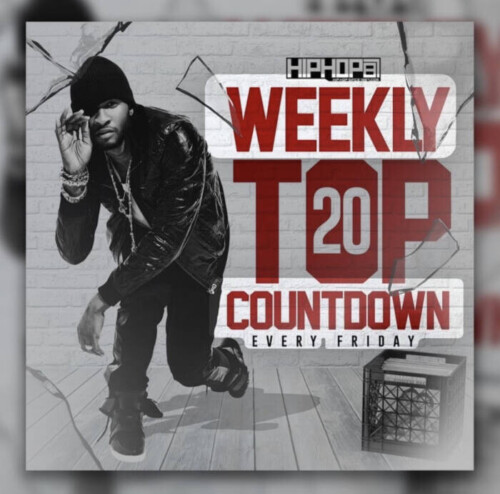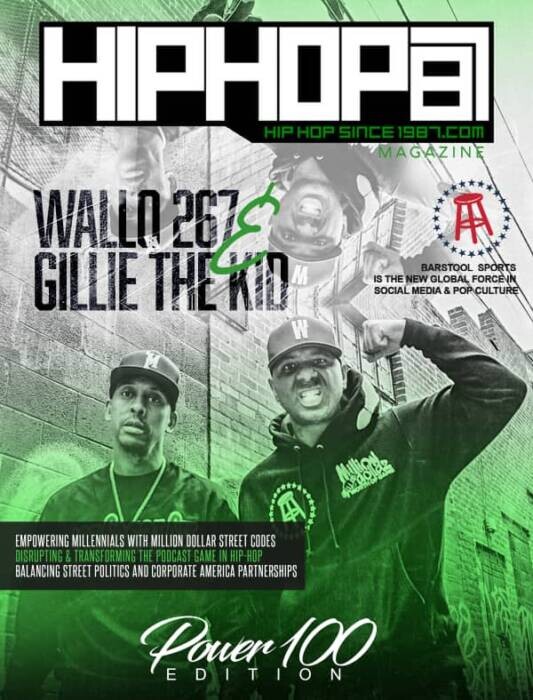
From Old School, Boom Bap, Gangsta, and Trap — Hip-hop has evolved so massively throughout the last 48 years into several different sub-genres, that it’s becoming a challenge for people to correctly compare artists in conversation. For example, it’s evident that Kendrick Lamar and Lil Uzi Vert are musically nothing alike, while Lil Uzi Vert and Juice WRLD may fall under the same category. How can we compare two artists, if their content doesn’t consistently correlate? Check below to learn how to properly classify certain hip-hop artists into their respective sub-genres.
Ready, Set, Go!
Let’s start off by paying homage to the Old School, where the roots of hip-hop originated. The birth of hip-hop arrived by the creative, massive effort of pioneer DJ Kool Herc. A few of the sub-genres listed below definitely fall under this umbrella, but the general synopsis of Old School rap created magic solely on the basis of sampling, turntables, and easy rhyme patterns. As the start of hip-hop’s sound, the Old School style of rap always receives it’s utmost credit, because the result turned into the massive movement of hip-hop music today.
Great Example of Old School:
Shortly following Old School, hip-hop was blessed with a twist: Boom Bap. Originating in the early 90’s via NYC, Boom Bap was the start of something grand, giving the intense experience of life in the streets. Calm, serene, and direct, Boom Bap is solely based on street-influenced lyricism, and even though it may not be as prevalent in hip-hop music as it once was, the homage has only grown stronger.
Great Example of Boom Bap:
Post-Boom Bap, Gangsta Rap slid into the picture. Originating in Philadelphia, PA, by rapper Schoolly D with his pioneer-hit “PSK”, Gangsta Rap holds a large contribution in hip-hop today. Even though PSK was released in 1986, Gangsta Rap didn’t really bubble up until a few years later when America was in a state of shock over NWA’s “F*ck The Police.” We can associate Gangsta Rap to other artists like Dr. Dre, DMX, 50 Cent and more.
Great Example of Gangsta Rap:
Everything has everything a bigger picture, and that’s where Conscious Rap takes off in mid-90’s in the midst Gangsta Rap and Boom Bap. Conscious Rap blessed the hip-hop culture with another form of activism. Prior to rap, activism was attributed in poetry for centuries, using the late Maya Angelou as an example of literary activism. Conscious Rap and literary activism go hand-in-hand, assisting the hip-hop community in voicing their black power. Some examples of conscious rappers are Common, Nipsey Hussle, and Kendrick Lamar.
Great Example of Conscious Rap:
It’s common knowledge that hip-hop was built on the basis of dancing, partying and having a good time, using DJ Kool Herc’s groundbreaking dance bash back in 1973 as an example. That one highly-anticipated block party was the birth of hip-hop. So the beginning of the Crunk era capitalized on this common fact. Crunk music was loud, fun, and made people wanna let loose. We can associate Crunk with artists like Lil Jon & The East Side Boyz, The Ying Yang Twins, and even Soulja Boy.
Great Example of Crunk:
Everybody loves a breezy summer day with the windows rolled down and the music up loud playing something hard-hitting and amplifying. Thank Trap Music for that top tier vibe. The term “trap” has an old Atlanta meaning for a drug hot-spot, clarifying the focus of the popular sub-genre, which would clearly be drugs. Coming into full-play with T.I.’s Trap Muzik and Gucci Mane’s Trap House in the early 2000’s, it expanded into it’s own massive bubble of sound. A few more respected Trap artists are Jeezy, Future, 2Chainz, and many more.
Great Example of Trap:
College parties are the best, always up-to-date on the hottest music, and overall a blast. So what fun genius put that entire experience into one song? His name would be Asher Roth. Coining the sub-genre Frat Rap due to it’s heavy attribution to the American fraternity college lifestyle, Asher Roth’s hit single “I Love College” started an entire wave. A wave big enough to give hip-hop gold, like the late Mac Miller, who was at first, grouped under Frat Rap earlier on in his career. Frat Rap is currently short-lived, but forever remembered.
Great Example of Frat Rap:
No one can deny the calming aspect of smooth music, and that is exactly what Cloud Rap is. That airy, but gritty feeling it provides is complicated to explain, and easier to experience. A$AP Rocky is one perfect example of what Cloud Rap stands for. Free, expressive, and varietal.
Great Example of Cloud Rap:
Hardcore, non-fictional, and very, very direct, the Chicago Drill movement is like no other. It has been imitated repeatedly, and still, nothing tops the origination. Built on the foundation of lyrically attacking another lyrical opposition, the twist is the music is fueled by real life experiences in Chicago’s streets. Highlighting the loss of companions, and the attacks of others, all into lyrics. Chicago Drill is definitely the rawest story-telling form of hip-hop, lyrically documenting real life street issues the rappers face. Starting off with rap star Chief Keef, a few other exemplary Chicago Drill pioneers would be King Von, Lil Durk, and G Herbo.
Great Example of Drill:
Bringing the wild, fun rock star attribution to hip-hop these days, Emo Rap has made an imposing statement. The twist to Emo Rap is also the vulnerability expressed in the music, opening up about drug addiction, mental health, heartbreaks, and more. Some popular emo artists are XXXtentacion, Juice WRLD, and Lil Uzi Vert.
Great Example of Emo Rap:
Not every hip-hop artist has lyricism that falls under the super street, gritty categories. Knowing that, hip-hop has created some of the most influential Alternative Rap gurus around. Similar to Conscious Rap, but a little shy off, Alternative Rap garnered it’s popularity from artists like Kanye West, who is clearly able to step into any box, and make it his own, always finding the alternative. Other examples are Childish Gambino, B.O.B, and Kid Cudi.
Great Example of Alternative Trap:
Music genres often end up colliding somewhere along the lines, and the electronic wave matched well with hip-hop, forming the EDM (Trap) wave. Provoking movement and entertainment, the EDM Trap wave is easy for clubs and parties, where music is most genuinely consumed.
Great Example of EDM Trap:
Popular in today’s rap music, Melodic/R&B Rap is taking the crown. The mix of rap-like lyricism, intertwined with melodies is almost like the respective artists are singing, but it’s not the same as an R&B track. Still gritty, soulful, and street, Melodic/R&B Rap is one of the ultimate sub-genres where rappers can show their vocal skills, and lyricism in one. Perfect examples would be artists like Polo G, J.I., and more.
Great Examples of Melodic/R&B Rap:
Taking over the airwaves like no other, this form of Drill originated in the streets of Brooklyn, NY. The term Drill is associated with the original Chicago Drill music, but these two cities have totally different spins on the sub-genre. They aren’t 100% comparable between both lyricism and production, even though the foundation is similar. Pop Smoke would be a popular example of Drill music in Brooklyn (NY). Other cool examples are 22Gz, Sleepy Hallow, Sheff G and Shawny Binladen.
Great Example of Drill (NY):
Hip-hop is just shy of 50-years-old. That being said, the evolution of the genre as a whole is forever expanding, and comparisons are easier made when grouping said artist with similar artists in his or her respective genre. While we wait to see what happens next, this is what’s happening now, and the trickle effect that hip-hop has had is everlasting.
Follow Our IG For Hip-Hop Updates: @HipHopSince1987
© 2021, alanna. All rights reserved.







